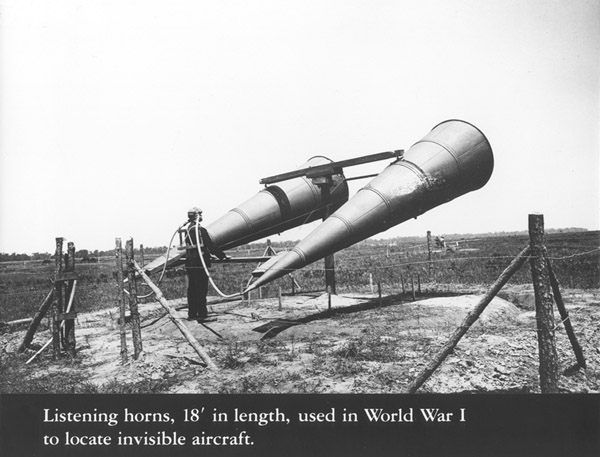Archives – Fall 2001
Photo: National Academy Archives
World War I Aircraft Detection
Within days of U.S. entry into World War I in April 1917, the Navy requested the National Research Council’s help in developing a method for detecting and locating aircraft. The Research Council passed the problem along to George W. Stewart, head of the physics department at the State University of Iowa. After some experimentation, Stewart designed a set of 18-foot-long listening horns, which were supposed to provide anti-aircraft and searchlight batteries with early warning of distant enemy aircraft. Stewart’s device never made it past the experimental stage; for field use, the American Expeditionary Forces adapted an aircraft sound locator purchased from the French. This photo shows a set of these horns undergoing trials at Ellington Field, outside of Houston, Texas, in Spring 1918.

